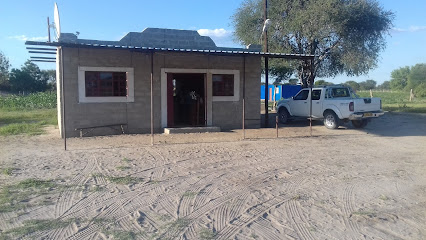
Okavango Delta: Africa's Wetland Paradise
Explore the Okavango Delta: A unique Botswana safari destination with incredible wildlife, stunning landscapes, and unforgettable experiences.
The Okavango Delta, a UNESCO World Heritage Site in Botswana, is a unique inland river system that doesn't flow into an ocean. Instead, it spreads into the Kalahari Desert, creating a lush oasis teeming with wildlife. This exceptional ecosystem is a must-see for safari enthusiasts and nature lovers.
A brief summary to Okavango
- BW
Local tips
- Visit during the dry season (May to October) for the best game viewing opportunities as animals congregate around the flooded areas.
- Pack lightweight, breathable clothing, comfortable walking shoes, sunscreen, insect repellent, and a hat to protect yourself from the sun.
- Consider a mokoro trip for a unique and peaceful way to explore the waterways and get close to the wildlife.
- Respect the wildlife by maintaining a safe distance and following your guide's instructions.
- Be aware that some camps and lodges are only accessible by light aircraft, so pack accordingly.
Getting There
-
Light Aircraft
The most common way to access the Okavango Delta is by flying into one of the airstrips located throughout the Delta. Shared charters are common from Maun Airport (MUB), the gateway to the Delta. The flight itself offers stunning aerial views of the landscape. Prices vary depending on the distance and operator, but expect to pay between $150-$300 per person for a one-way flight.
-
Safari Vehicle & Mokoro
From Maun, some tour operators offer a combination of 4x4 vehicle transport to the edge of the Delta, followed by a traditional mokoro (dugout canoe) trip into the waterways. This offers a more immersive experience. A full-day mokoro trip, including lunch and park fees, typically costs between $100-$200 per person. Park fees themselves are roughly $17.50 per adult per day.
Discover more about Okavango
Iconic landmarks you can’t miss
Bwabwata National Park Mahango Core Area
12.9 km
Discover the breathtaking landscapes and diverse wildlife at Bwabwata National Park Mahango Core Area in Namibia, a hidden gem for nature lovers.
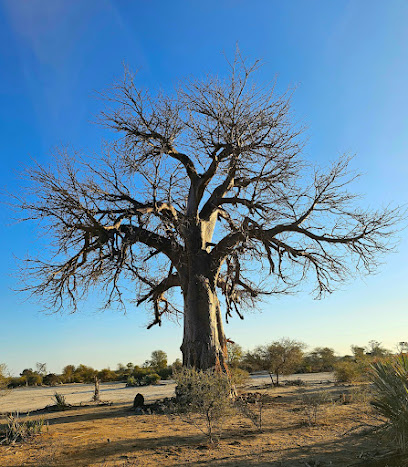
Drotsky's Cabins
18.2 km
Discover the beauty of Botswana at Drotsky's Cabins, a perfect self-catering retreat along the scenic Okavango River with nature and adventure at your doorstep.

Mahangu Safari Lodge
19.2 km
Discover the beauty of Namibia at Mahangu Safari Lodge, where wildlife adventures and relaxation await in a stunning natural setting.

Ndhovu Safari Lodge
19.5 km
Discover the tranquility and adventure of Ndhovu Safari Lodge, where nature meets comfort in the heart of Namibia's wilderness.

Rainbow River Lodge
28.0 km
Experience authentic Namibian hospitality at Rainbow River Lodge, where nature meets comfort on the banks of the Zambezi River.
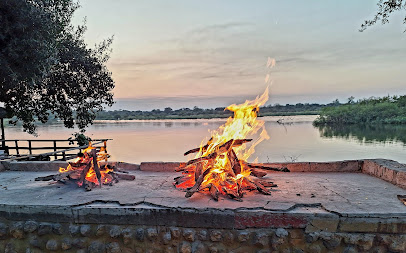
Divava Okavango Lodge & Spa
28.0 km
Discover the serene beauty of Namibia at Divava Okavango Lodge & Spa, where luxury meets nature in a breathtaking setting.

Nunda River Lodge
28.1 km
Discover the tranquility of Nunda River Lodge, your gateway to the breathtaking landscapes and wildlife of Namibia.

Divundu Guest House
32.0 km
Discover the tranquility of Kavango at Divundu Guest House, where comfort meets stunning natural beauty in Namibia's wilderness.
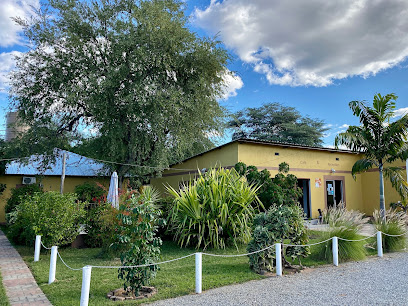
Tsodilo Hills (World Heritage Site)
55.1 km
Discover the breathtaking landscapes and ancient rock art of Tsodilo Hills, a UNESCO World Heritage Site in Botswana, rich in culture and natural beauty.
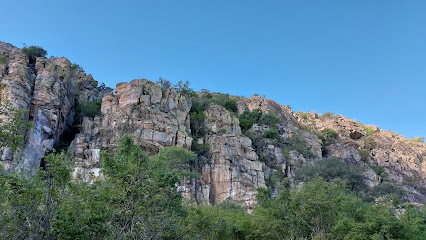
RIVERDANCE Lodge
56.2 km
Experience the perfect blend of relaxation and adventure at Riverdance Lodge, nestled along the stunning Kavango River in Namibia.
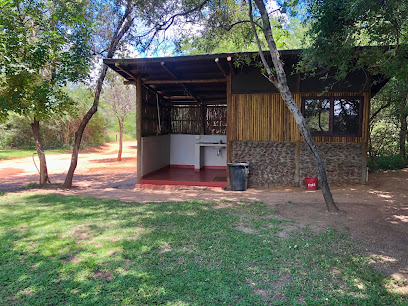
Mobola Island Lodge
58.1 km
Discover the charm of Mobola Island Lodge in Rudhiva, Namibia - a perfect blend of comfort, adventure, and breathtaking natural beauty.
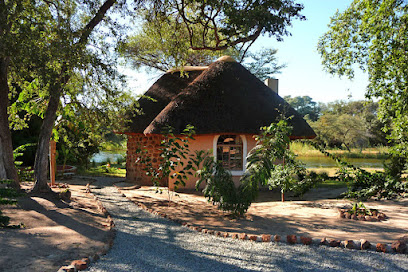
Unmissable attractions to see
Ngepi Camp
21.8 km
Discover the beauty of Namibia at Ngepi Camp, where nature meets adventure along the stunning Kavango River.

Buffalo Park Entrance Gate
22.8 km
Discover the natural wonders at Buffalo Park Entrance Gate, where scenic beauty and wildlife converge in a tranquil outdoor paradise.
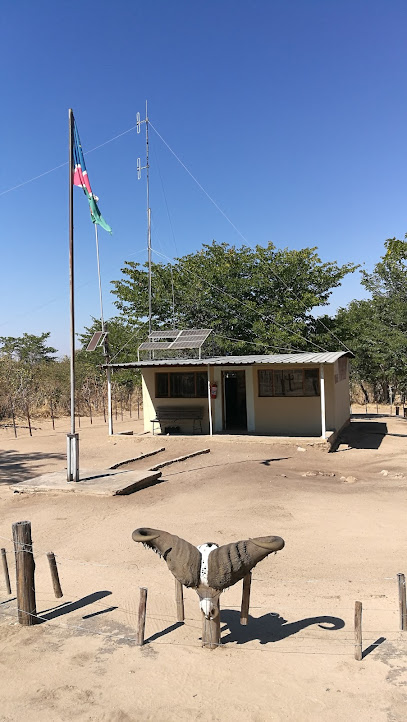
Emms Cubango Ecological Camp
24.9 km
Experience the natural beauty and tranquility of Namibia at Emms Cubango Ecological Camp, where adventure meets ecological sustainability.
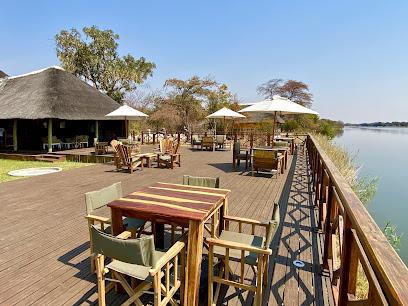
Khwe Living Museum
25.1 km
Discover the vibrant traditions and rich heritage of the Khwe people at the Khwe Living Museum, an unforgettable cultural experience in Namibia.
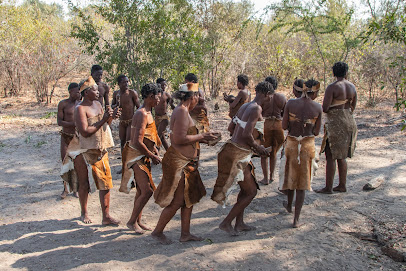
Popa Falls Resort - NWR
27.9 km
Experience the beauty of Namibia at Popa Falls Resort, where comfort meets adventure along the Okavango River.

Popa Game Park
28.1 km
Explore the captivating beauty and wildlife of Popa Game Park, a serene escape in Namibia's natural wonderland.
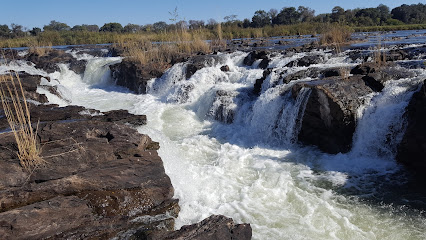
Bwabwata-National Park
29.6 km
Discover the breathtaking landscapes and rich wildlife of Bwabwata National Park, a pristine nature reserve in Namibia perfect for adventurous travelers.
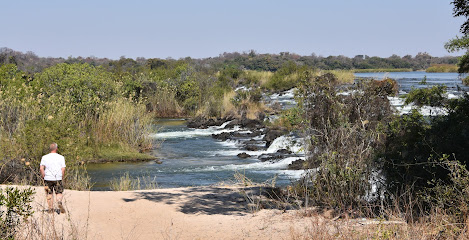
Cliff Trail Painting 1
51.5 km
Discover the breathtaking Cliff Trail Paintings of Tsodilo Hills, a UNESCO World Heritage Site showcasing ancient artistry and stunning natural beauty.

Rhino Trail Painting 4
53.2 km
Explore the ancient rock art and breathtaking landscapes of Rhino Trail Painting 4 in Tsodilo Hills, a UNESCO World Heritage Site in Botswana.

Rhino Trail Painting 13
54.3 km
Discover the ancient rock art and breathtaking landscapes of Rhino Trail Painting 13 in Tsodilo Hills, a UNESCO World Heritage Site in Botswana.

Cave
54.3 km
Explore Tsodilo Hills, Botswana's UNESCO World Heritage Site, rich in ancient rock art and breathtaking landscapes, perfect for nature lovers and history enthusiasts.

Tsodilo community Development Trust
55.2 km
Discover the ancient rock art and breathtaking landscapes at Tsodilo Hills, the UNESCO World Heritage Site in Botswana, a true gem for history lovers.

Namibia Space Observatory
84.5 km
Discover the cosmos at the Namibia Space Observatory, where stunning views and educational experiences converge in the heart of Namibia's night skies.

Caprivi Game Park
84.9 km
Explore the breathtaking landscapes and diverse wildlife of Caprivi Game Park, a must-visit national park in Namibia for nature enthusiasts.
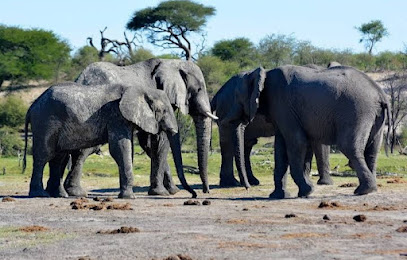
Essential places to dine
The Eatery Joint
10.2 km
Discover authentic flavors at The Eatery Joint in Shakawe – your gateway to Botswana's culinary heritage.
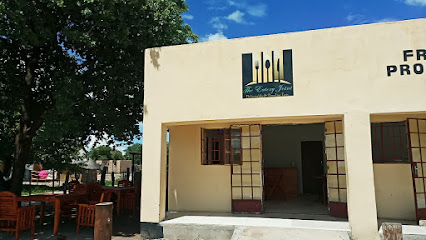
Dijo Deli Restaurant
13.7 km
Experience authentic Botswanan cuisine at Dijo Deli Restaurant in Shakawe – where local flavors meet culinary creativity.
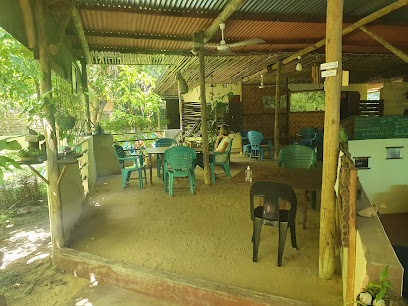
Shametu River Lodge & Campsite
27.9 km
Discover tranquility and adventure at Shametu River Lodge & Campsite, your gateway to Namibia's stunning landscapes and wildlife.

Divundu Guest House Restaurant & Bar
32.0 km
Savor authentic Namibian cuisine at Divundu Guest House Restaurant & Bar – where local flavors meet warm hospitality.
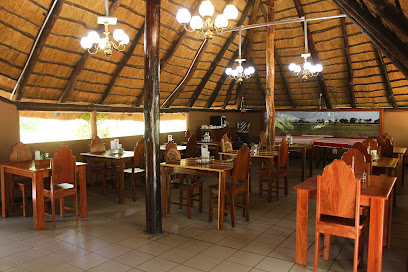
Markets, malls and hidden boutiques
The Original Farmhouse
2.8 km
Discover the charm of rural Botswana at The Original Farmhouse, your serene escape into organic farming and nature's beauty.
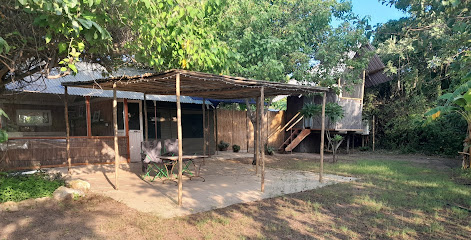
SEFALANA Shoppers Shakawe
11.0 km
Experience the essence of Botswana at SEFALANA Shoppers in Shakawe – where convenience meets local culture in a delightful shopping atmosphere.
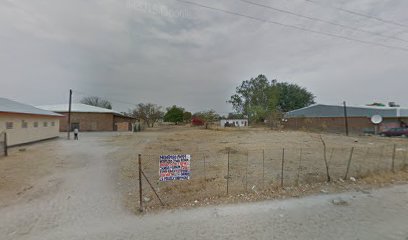
PEP Shakawe
11.0 km
Explore the vibrant world of fashion at PEP Shakawe, where style meets affordability in the heart of Botswana.
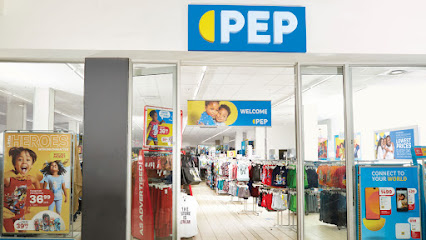
Blackthorn Inc
11.1 km
Explore the unique offerings at Blackthorn Inc, a vibrant general store in Shakawe, where local culture meets everyday essentials.
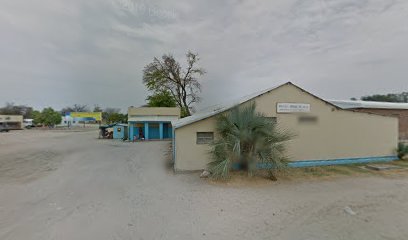
Carnival Furnishers Shakawe
11.1 km
Explore Carnival Furnishers in Shakawe for unique fitted furniture that captures Botswana's artistry and culture, perfect for your home.
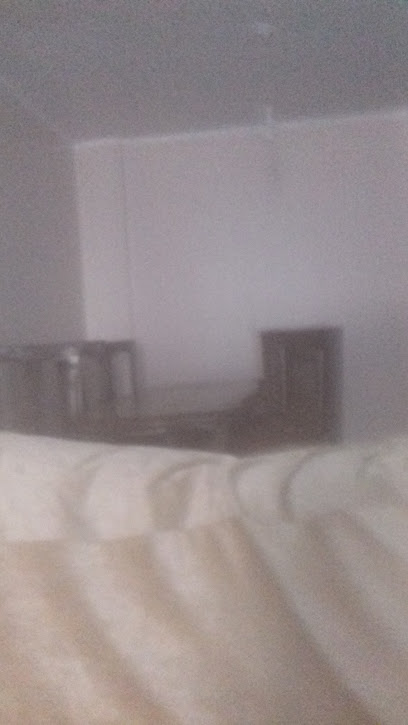
COLLEEN'S STATIONARY
11.1 km
Discover Colleen's Stationery in Shakawe: your destination for unique pens, notebooks, and creative supplies in a charming local shop.
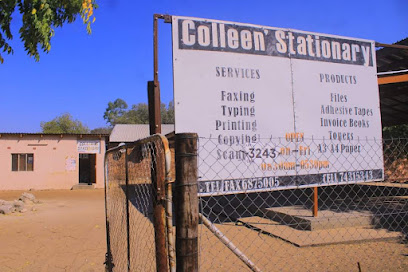
Bright hope mini shop
11.2 km
Discover the charm of Xakao at Bright Hope Mini Shop, your local destination for authentic crafts, snacks, and essentials.

Kim's closet
11.4 km
Discover unique clothing and vibrant styles at Kim's Closet in Shakawe, where local culture meets contemporary fashion.
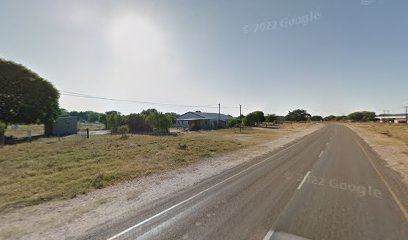
JB Sports Acaia Mall Shakawe
11.7 km
Explore the vibrant JB Sports at Acaia Mall in Shakawe for the latest in sports apparel and equipment, blending fashion and functionality.
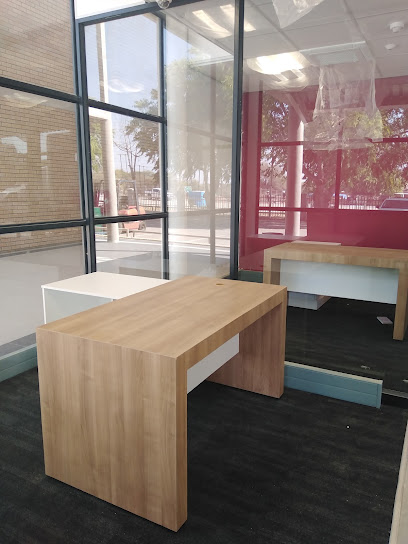
Tesfaye Express
11.7 km
Visit Tesfaye Express in Shakawe for quality hardware and local charm, perfect for all your DIY and home improvement projects.
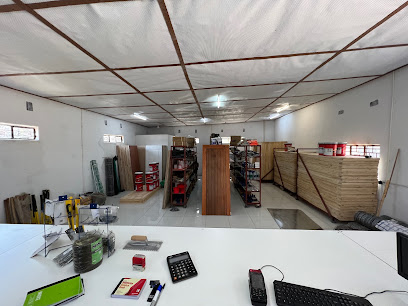
Choppies Shakawe
11.8 km
Explore the best of grocery shopping at Choppies Shakawe, where convenience meets local culture in Botswana.

Acaciamall
11.8 km
Experience the local flavors of Botswana at Acaciamall, a bustling grocery store in Shakawe, perfect for tourists and locals alike.
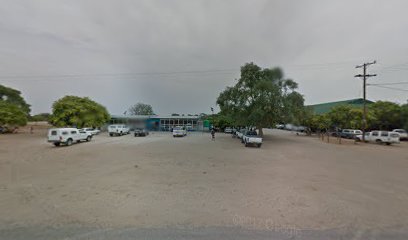
Hombe Supermarket & Take Away
32.5 km
Explore the diverse offerings of Hombe Supermarket & Take Away, your go-to convenience store in Divundu for essentials and delicious local cuisine.
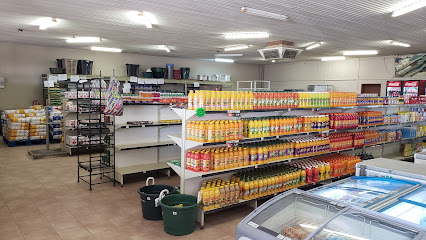
Tsodilo Hills
52.9 km
Explore Tsodilo Hills, Botswana's breathtaking UNESCO World Heritage Site, famed for its ancient rock art and stunning natural landscapes.
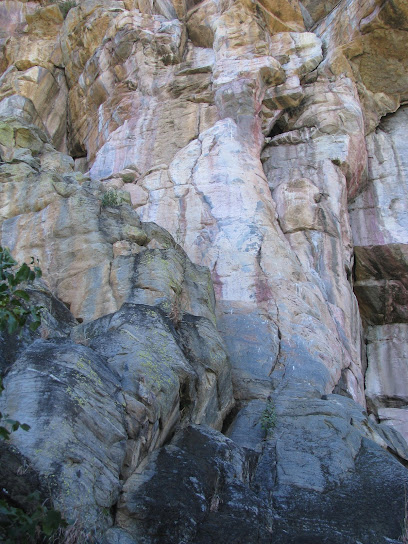
Tsodilo Hills Chalets
54.1 km
Discover the breathtaking beauty and cultural richness of Tsodilo Hills at the tranquil Tsodilo Hills Chalets, a perfect getaway for nature lovers.
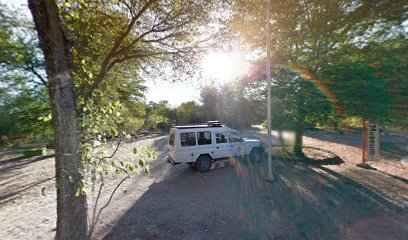
Essential bars & hidden hideouts
Pub Chillas
21.2 km
Discover the lively atmosphere of Pub Chillas in Samochima, where local drinks and friendly faces await every visitor.
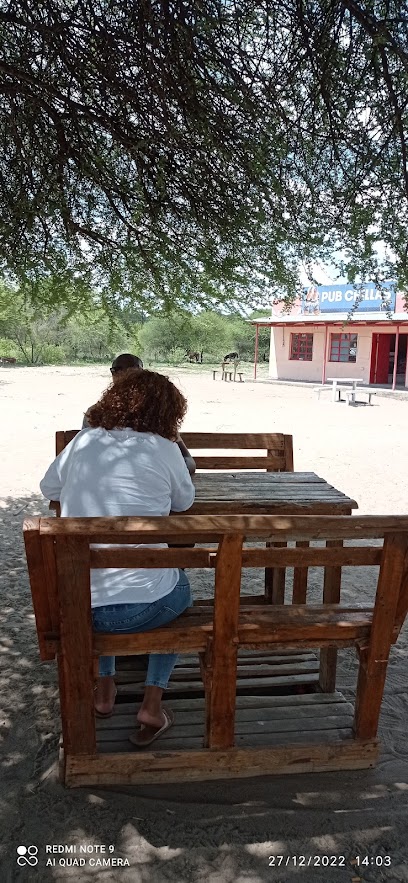
Shakawe River Lodge
21.4 km
Discover the beauty of Botswana at Shakawe River Lodge, a perfect blend of relaxation, adventure, and exquisite dining along the Okavango Panhandle.

Gerry Garden Bar
29.3 km
Discover the inviting ambiance of Gerry Garden Bar in DIvundu, where refreshing drinks and local culture meet in a relaxing atmosphere.
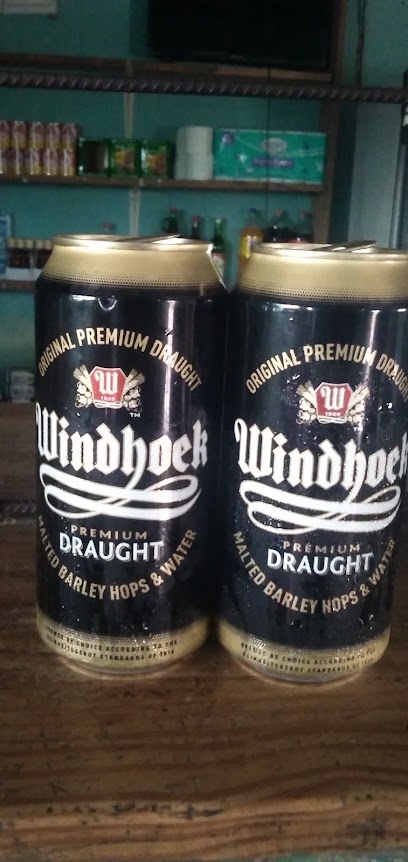
Emms Cafe & Lounge
32.6 km
Discover the flavors of Namibia at Emms Cafe & Lounge in Divundu, where every meal is a celebration of local cuisine and culture.
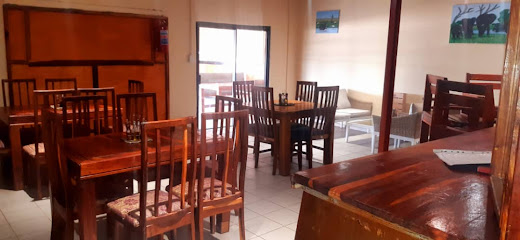
Baby's bar
51.3 km
Discover the vibrant atmosphere of Baby's Bar in Omega, a perfect spot for drinks, socializing, and enjoying local nightlife.

Tsodilo Camp
57.3 km
Discover the captivating beauty and cultural heritage at Tsodilo Camp, Botswana's serene campground near the ancient Tsodilo Hills.
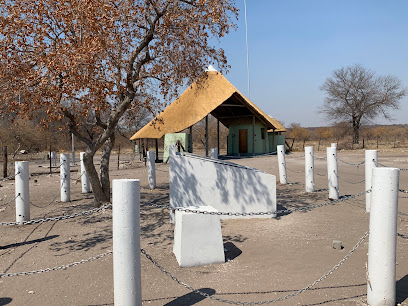
Paramount Bar
89.3 km
Discover the lively ambiance and refreshing drinks at Paramount Bar in Seronga, a must-visit for an unforgettable night out.

Kashekete Bar
89.6 km
Discover the laid-back vibes of Mukuvi at Kashekete Bar, where refreshing drinks and friendly faces await in a vibrant atmosphere.
